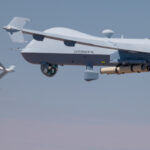
Lockheed Martin [LMT] on Tuesday posted solid results in its first quarter with earnings and sales higher and the company increased its outlook this year for the top and bottom lines. The higher earnings in the quarter were aided by a gain in the company’s Ventures Fund business that invests in start-up and other small technology companies, partially offset by severance and restructuring costs in the Rotary and Mission Systems (RMS) segment that is being realigned to improve efficiency and…

 By
By 











